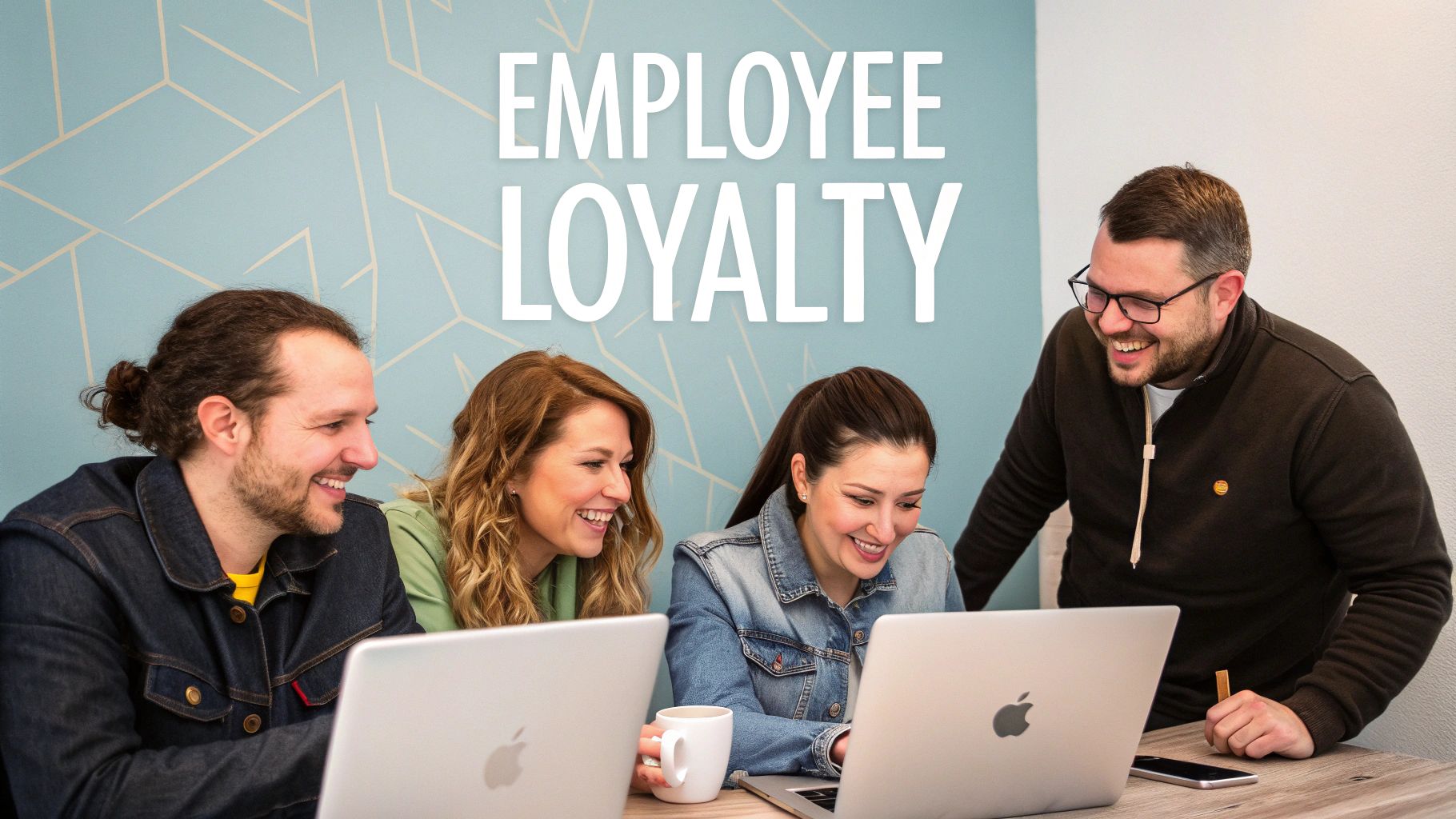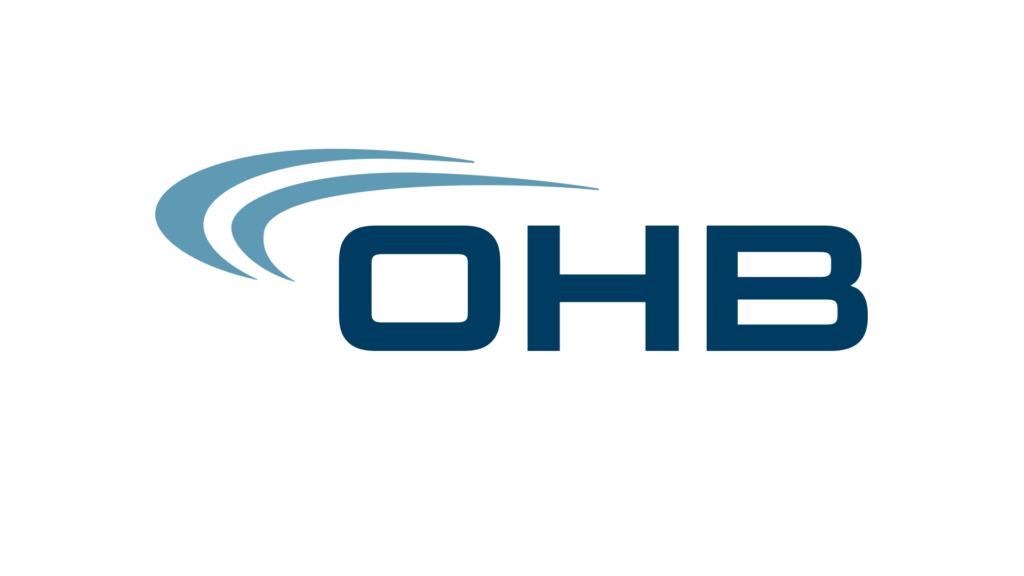In an era where job-hopping has become the norm and the average employee tenure continues to shrink, understanding employee loyalty might seem like trying to catch smoke with your bare hands. But here's something that might surprise you: companies that successfully foster employee loyalty are seeing up to 87% higher customer retention rates. What's their secret? Let's uncover the truth about workplace commitment in 2025 and beyond.
Understanding Employee Loyalty: Definition and Modern Context
What defines employee loyalty today
In 2025, employee loyalty means actively contributing to an organization's success while feeling genuinely connected to its mission and values. It's about employees who go beyond merely showing up for work – they bring their best ideas, support their colleagues, and act as brand ambassadors even outside the workplace.
A loyal employee demonstrates commitment through actions rather than just years of service. They participate in company initiatives, provide constructive feedback, and actively work to improve organizational processes. This modern definition focuses on quality of contribution rather than length of tenure.
How loyalty has evolved in the workplace
The traditional notion of lifetime employment has given way to a more dynamic understanding of workplace commitment. Today's workforce values purpose, growth opportunities, and work-life balance over the promise of long-term job security.
The rise of remote work and digital transformation has also reshaped how loyalty manifests. Virtual teams build commitment through shared goals and digital collaboration, proving that physical presence isn't necessary for strong workplace bonds.
Key indicators of loyal employees
Several behaviors signal strong employee loyalty:
- Consistent engagement in company initiatives
- Willingness to help colleagues beyond job requirements
- Active participation in company culture
- Constructive feedback and problem-solving approaches
- Pride in representing the organization
The Business Impact of Employee Loyalty
Cost savings from reduced turnover
Organizations with high employee loyalty experience significantly lower turnover costs. When accounting for recruitment, training, and lost productivity, replacing an employee can cost up to twice their annual salary. Companies with strong retention rates avoid these expenses and maintain operational consistency.

Connection to customer satisfaction
Loyal employees create loyal customers. They understand the company's products or services deeply and can provide better customer experiences. As noted by Neroia's workplace satisfaction studies, organizations with highly engaged employees report 20% higher customer satisfaction scores.
Impact on productivity and innovation
Committed employees bring their full creativity and effort to work. They're more likely to suggest improvements, participate in innovation initiatives, and work efficiently. Their deep understanding of company processes allows them to identify and implement meaningful improvements.
Effect on company culture
A core of loyal employees strengthens organizational culture by:
- Preserving institutional knowledge
- Mentoring new hires
- Supporting company values
- Creating a positive work environment
- Building strong team relationships
Why Employees Leave: Understanding the Loyalty Crisis
The changing nature of workplace commitment
Modern workers prioritize personal growth and work-life balance over traditional job security. They seek environments that support their development and align with their values. When these elements are missing, even well-compensated employees may look elsewhere.
Role of management in employee retention
Poor management remains a leading cause of employee turnover. Leaders who fail to provide clear direction, recognition, or support create environments where loyalty cannot flourish. Regular feedback, transparent communication, and genuine interest in employee well-being are crucial management practices.

Impact of workplace uncertainty
Economic fluctuations, industry disruptions, and organizational changes can shake employee confidence. Without clear communication and support during uncertain times, workers may seek more stable opportunities elsewhere.
Compensation and growth limitations
While money isn't everything, fair compensation and clear career paths are fundamental to retention. Organizations that fail to provide competitive packages or advancement opportunities risk losing valuable talent to competitors.
Creating a Culture That Fosters Loyalty
Building psychological safety
Employees need to feel safe sharing ideas, making mistakes, and being themselves at work. Organizations that create psychologically safe environments see higher engagement and innovation levels.
Developing strong workplace relationships
Strong professional relationships anchor employees to their organizations. Regular team-building activities, mentorship programs, and collaborative projects help forge these connections.
Establishing clear company values
When organizations live their stated values, employees feel part of something meaningful. Clear values guide decision-making and create a sense of shared purpose that strengthens loyalty.
Promoting work-life balance
Modern employees expect their organizations to respect their personal time and well-being. Flexible scheduling, remote work options, and wellness programs demonstrate that companies value their people as whole individuals.
By understanding and implementing these principles, organizations can create environments where employee loyalty naturally flourishes. The key lies not in forcing commitment but in building workplaces worthy of it.
Leadership Practices That Drive Employee Loyalty
Transparent Communication Strategies
Effective leaders understand that transparency builds trust. When managers share both successes and challenges openly, team members feel valued and included in the organization's journey. Regular town halls, honest updates about company performance, and clear explanations of strategic decisions help employees feel connected to the bigger picture.
Consider implementing weekly team check-ins where leaders share updates about ongoing projects and upcoming changes. This practice helps prevent rumors and ensures everyone has access to accurate information. When difficult decisions need to be made, explaining the reasoning behind them helps maintain trust even during challenging times.
Trust-building Techniques
Building trust requires consistent actions over time. Leaders should demonstrate reliability by following through on commitments and maintaining confidentiality when appropriate. Creating safe spaces for open dialogue allows team members to express concerns without fear of retribution.
One effective approach is the "open door policy 2.0" – where leaders actively schedule time for one-on-one conversations rather than passively waiting for employees to approach them. This proactive stance shows genuine interest in team members' perspectives and concerns.
Recognition and Appreciation Methods
People want to feel valued for their contributions. Effective recognition goes beyond annual performance reviews. Leaders should develop habits of immediate, specific praise when team members demonstrate excellence or embody company values.
Public recognition during team meetings, personalized thank-you notes, and sharing success stories through internal communications channels all contribute to a culture of appreciation. The key is making recognition timely, specific, and genuine rather than generic or delayed.
Empowerment and Autonomy Approaches
Micromanagement kills motivation. Leaders who trust their teams to make decisions and solve problems independently foster stronger employee loyalty. This means providing clear objectives while allowing flexibility in how goals are achieved.
Successful leaders delegate meaningful responsibilities and support team members' growth through calculated risk-taking opportunities. When mistakes happen, they're treated as learning experiences rather than failures.
Investing in Employee Growth and Development
Professional Development Opportunities
Modern workers seek continuous learning experiences. Smart organizations provide access to online courses, industry certifications, and skill-building workshops. These opportunities should align with both company needs and individual career aspirations.
Creating learning budgets for each employee demonstrates commitment to their growth. Whether it's attending conferences, pursuing advanced degrees, or participating in specialized training, supporting professional development shows investment in long-term success.
Career Advancement Pathways
Clear career progression routes help employees envision their future within the organization. This includes transparent promotion criteria, skill development roadmaps, and regular career planning discussions.
Leaders should work with team members to create individual development plans that outline specific steps toward career goals. Regular check-ins help track progress and adjust plans as needed.
Mentorship Programs
Structured mentorship initiatives connect experienced professionals with emerging talent. These relationships provide guidance, support, and networking opportunities that accelerate professional growth.
Effective mentorship programs include clear expectations, regular meeting schedules, and specific goals for both mentors and mentees. The focus should be on long-term development rather than short-term task management.
Skill-building Initiatives
Targeted training programs help employees develop new capabilities relevant to their current roles and future aspirations. This might include technical skills, leadership development, or soft skills enhancement.
Cross-training opportunities allow team members to learn different aspects of the business, making them more valuable to the organization while expanding their career options.
Modern Retention Strategies for 2025
The Rise of Employee Benefits Platforms
Modern organizations are turning to integrated benefits platforms to streamline and enhance their retention efforts. These digital solutions offer several advantages:
- Centralized benefits management
- Personalized employee experiences
- Data-driven insights into program effectiveness
- Seamless integration with existing systems
- Enhanced accessibility and user engagement
Neroia stands out in this space by focusing on the social fabric of organizations. Their AI-driven platform facilitates natural connections through shared interests and activities, addressing the often-overlooked social aspect of employee retention.
Flexible Work Arrangements
The future workplace demands flexibility. Organizations offering hybrid work options, flexible hours, and results-focused rather than time-based performance measures see higher retention rates. This flexibility demonstrates trust and respect for employees' work-life integration needs.
Competitive Compensation Packages
While money isn't everything, fair compensation remains crucial. Regular market analysis ensures salary ranges stay competitive. Beyond base pay, consider innovative benefits like equity participation, performance bonuses, and lifestyle perks that add real value to employees' lives.
Employee Wellness Programs
Holistic wellness support has become essential. Comprehensive programs should address physical, mental, and financial well-being. This might include fitness subsidies, mental health resources, and financial planning assistance.
Recognition and Rewards Systems
Modern recognition programs go beyond traditional employee-of-the-month approaches. They incorporate peer recognition, real-time feedback, and meaningful rewards that align with personal preferences.
In today's competitive landscape, building and maintaining employee loyalty requires a comprehensive approach that addresses both professional and personal needs. Platforms like Neroia help organizations create stronger workplace connections through AI-driven social benefits, making it easier to implement many of these strategies while fostering genuine relationships among team members.




